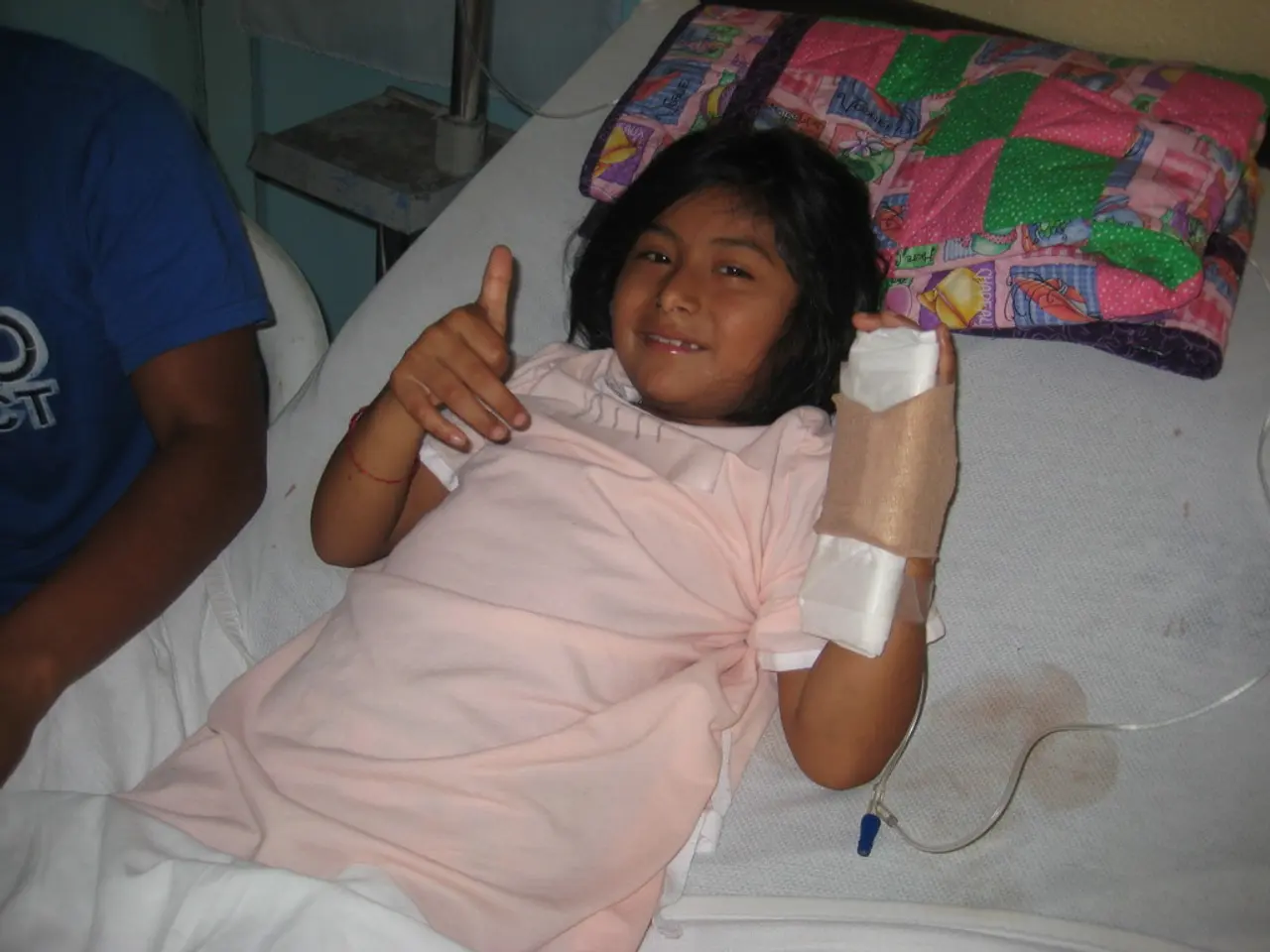Approximately 18 million additional girls in South Asia potentially face the risk of anaemia by the year 2030, according to the World Health Organization's South East Asia regional office.
In a groundbreaking move, seven South Asian countries have joined forces to tackle anemia, a public health concern that affects millions of women and children across the region. The initiative, highlighted in a recent World Health Organisation South-East Asia (WHO-SEA) statement, aims to reduce anemia prevalence through concerted and multifaceted actions.
The campaign focuses on strengthening health systems and expanding nutrition programs, with a particular emphasis on iron supplementation integrated into school health and maternal care services. High-burden states or districts in India, Pakistan, and Sri Lanka are prioritized for increased coverage [1].
Community-based nutrition initiatives are also key to the strategy. For instance, Pakistan has piloted nutrition programs linked with reproductive health services, enabling early detection and intervention. Nepal deploys female community health volunteers who provide counseling, referrals, and nutritional support, even in remote regions, resulting in significant reductions in anemia among women of reproductive age, particularly in poorer areas [1].
Inter-ministerial collaboration and food fortification efforts are also emphasized. The Maldives and Bhutan prioritize early prevention through childhood nutrition, food fortification, and public awareness campaigns coordinated between health, education, and agriculture sectors [1].
School-based health initiatives and fortified meals targeted at adolescents are active in Bangladesh, reflecting a multisectoral approach to reach younger populations vulnerable to anemia [1]. Social support programs such as cash grants and nutrition gifts for pregnant women support safer births and improved maternal nutrition, as seen in Nepal [1].
These efforts represent integrated, community-driven, and multisectoral strategies that combine supplementation, food fortification, education, and social support aimed at both prevention and treatment [1][2][3].
Despite these efforts, anemia remains a concern in countries like Sri Lanka, where it affects 18.5 per cent of women of reproductive age and 14.6 per cent of children under five. However, there are promising local results in India, Pakistan, and Bangladesh, where empowered health workers, data-driven programs, and integrated platforms have shown success in reducing anemia [1].
The "Nourishing South Asia | Reducing Anaemia in Adolescent Girls and Women" regional conference is being hosted in Colombo, Sri Lanka from July 9-11. The conference aims to shape a shared regional framework and country action plans to address anemia. A new South Asia Anaemia Academic Alliance will also be launched at the conference, aimed at rallying scientific leadership and closing research gaps to drive long-term solutions [4].
It's important to note that anemia is not just a health problem, but also a warning sign of deeper issues such as poor nutrition, infections, and inequality. Anaemia during pregnancy poses a risk to both mother and baby. The overall number of anemia cases has remained largely unchanged for the last two decades, but progress is possible [5].
Anaemia stifles potential, productivity, and entire economies, costing the South Asia region USD 32.5 billion each year. However, the return on investment for maternal anemia interventions is undeniable, with every USD1 invested yielding an economic return of USD 9.50 [5].
Despite the progress, many countries in South Asia still face significant challenges that hinder progress in tackling anemia. The WHO-SEA has stated that anemia occurs when the body lacks sufficient healthy red blood cells to carry oxygen, resulting in people feeling weak, tired, and more susceptible to illness [6].
However, Nepal has consistently achieved significant results over the past decade in reducing anemia, with a decline of 7% in the prevalence of anemia in women of reproductive age. WHO projections forecast that by 2030, anemic women in Nepal will decline to 27% [7].
In conclusion, the concerted actions of South Asian countries to combat anemia in adolescent girls and women represent a significant step towards improving the health and well-being of millions of people across the region. The integrated, community-driven, and multisectoral strategies aim to reduce anemia prevalence and improve the quality of life for millions of people in South Asia.
- The campaign to combat anemia extends to various aspects, including opinion, education, and self-development, with a focus on understanding and addressing the deeper issues associated with anemia.
- Public health news highlights the ongoing concern of anemia in men's health, specifically in South Asia, where it affects a significant percentage of men and boys.
- The importance of workplace-wellness initiatives is emphasized as a means to reduce anemia among working individuals by promoting awareness, nutrition programs, and medical screenings.
- Traveling medical teams are utilized in some regions to advocate for healthcare education and screenings, with the aim of early detection, intervention, and prevention of anemia.
- Science and research play a crucial role in the understanding and development of therapies and treatments for chronic diseases like anemia, aiming to improve cardiovascular health and overall well-being.
- The concern for anemia doesn't just apply to physical health, but also extends to mental health, as ongoing anemia can lead to increased stress, anxiety, and depression in those affected.
- In the fight against anemia, eye health and hearing are also given attention, as anemia can potentially lead to skin conditions and neurological disorders due to the vital role of iron in these systems.
- Digestive health is another area of focus as irregular bowel movements and malabsorption can lead to susceptibility to anemia.
- Median conditions, such as cancer, require anemia management as a part of their comprehensive treatment plans, with iron supplementation often administered to boost red blood cell production.
- The prevalence of respiratory conditions is also linked to anemia, as poor oxygenation can exacerbate anemia and vice versa, making it crucial to consider both in health management.
- Despite the various efforts in addressing anemia, progress needs to be accelerated in terms of parenting education, to ensure new parents are aware of the signs and prevention methods for anemia in their children.
- Medicare and health insurance policies should prioritize anemia screenings and treatments, as addressing anemia can improve overall health, and thus, career development, personal growth, and quality of life.
- CBD, a compound derived from the cannabis plant, is gaining attention in the health and wellness community for its potential in managing anemia and other related symptoms, although further research is needed to confirm its efficacy.
- The South Asian initiative to combat anemia underscores the importance of women's health, as tackling anemia in women of reproductive age benefits not just the individual but the entire community, encouraging improved skin care, maternal health, and reproductive health services.




